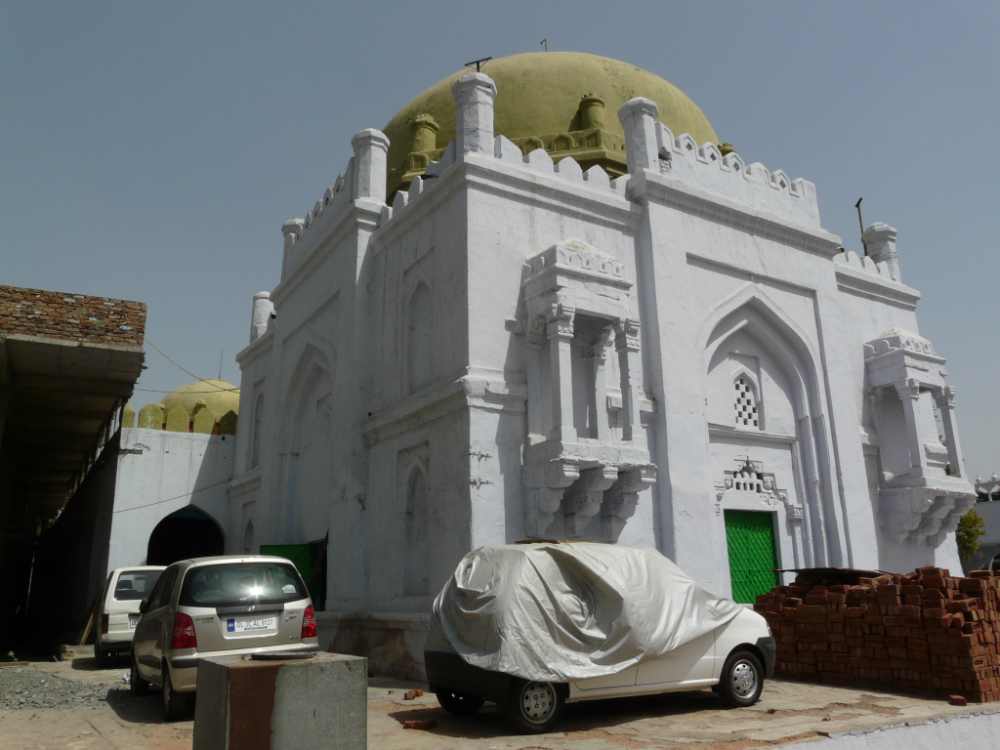
Tucked away amidst the bustling streets of Delhi lies the Tomb of Khwaja Sara Basti Khan, a hidden architectural treasure steeped in history. This 17th-century structure is an evocative reminder of the Mughal era, built for Basti Khan, a high-ranking eunuch (Khwaja Sara) who served in the royal court. It reflects a fascinating facet of Mughal society, where Khwaja Saras held prestigious positions of power and influence, often acting as confidants, administrators, and guardians of royal households. The Tomb of Basti Khan showcases a unique blend of Islamic and Mughal architecture, with subtle Rajputana influences in the decorative details. Its whitewashed exterior, juxtaposed against the weathered yellow domes, provides a striking contrast. The arched doorways and jharokha-style balconies add ornamental elegance to the tomb, embodying the architectural fusion of the time. The green-painted doors offer a vibrant touch to the otherwise monochrome structure. The central dome, slightly elevated, forms the architectural highlight of the tomb, surrounded by miniature domes on each corner. These smaller domes enhance the symmetry and balance characteristic of Mughal-era structures. Although modest compared to grand Mughal tombs, the Tomb of Khwaja Sara Basti Khan exudes a quiet dignity, standing as a testament to its occupant's importance within the royal court. Basti Khan served during the reign of Mughal Emperor Aurangzeb, holding significant sway in matters of state and administration. His tomb reflects the honor given to Khwaja Saras, who, despite their unconventional roles in society, earned respect and power within the royal establishment. Such tombs are rare architectural legacies, symbolizing not only personal prestige but also the social complexities of the Mughal era. Exploring this tomb offers a glimpse into a lesser-known chapter of Mughal history. Visitors will appreciate the quiet atmosphere surrounding the tomb, making it a perfect destination for those seeking to explore Delhi beyond the usual tourist trail. While parts of the structure may appear neglected today, the tomb remains a symbol of resilience, preserving the memory of an era where every individual—regardless of their societal standing—had a story worth commemorating. Though off the beaten path, the Tomb of Khwaja Sara Basti Khan is a rewarding site for history enthusiasts, architects, and those looking to experience the unpolished charm of Delhi’s forgotten heritage.